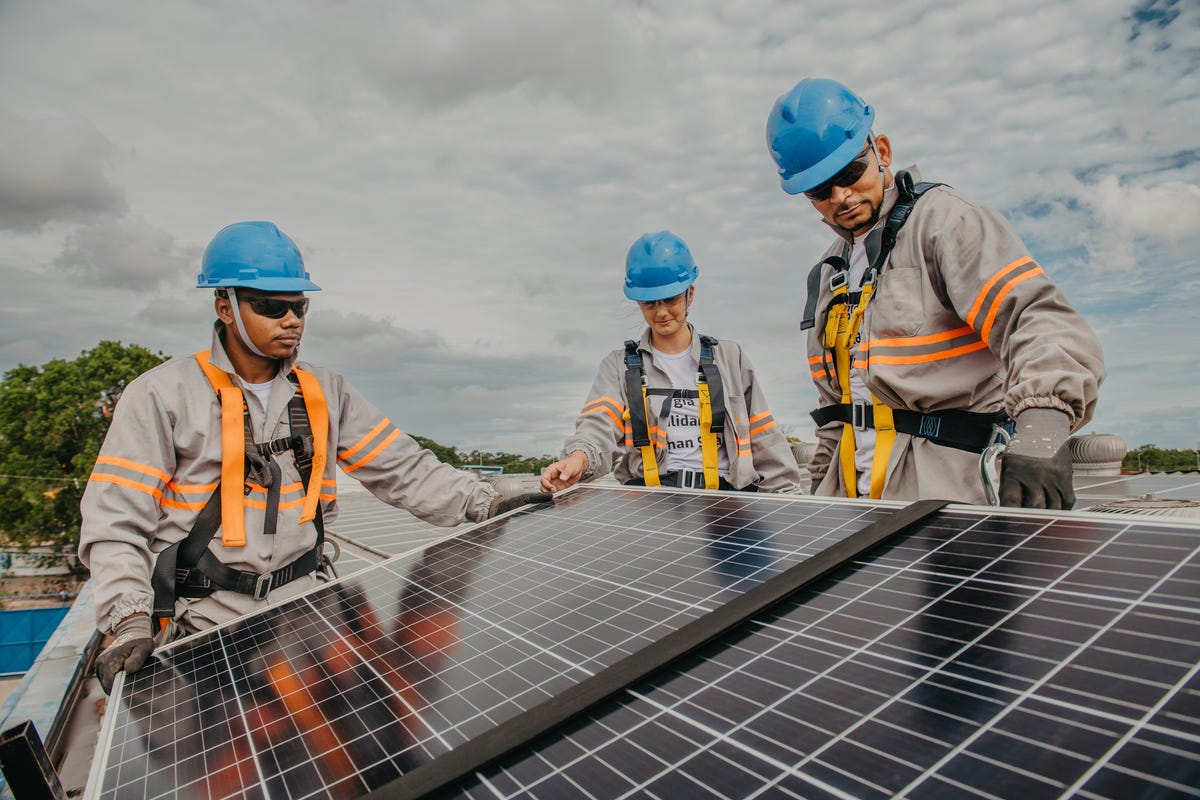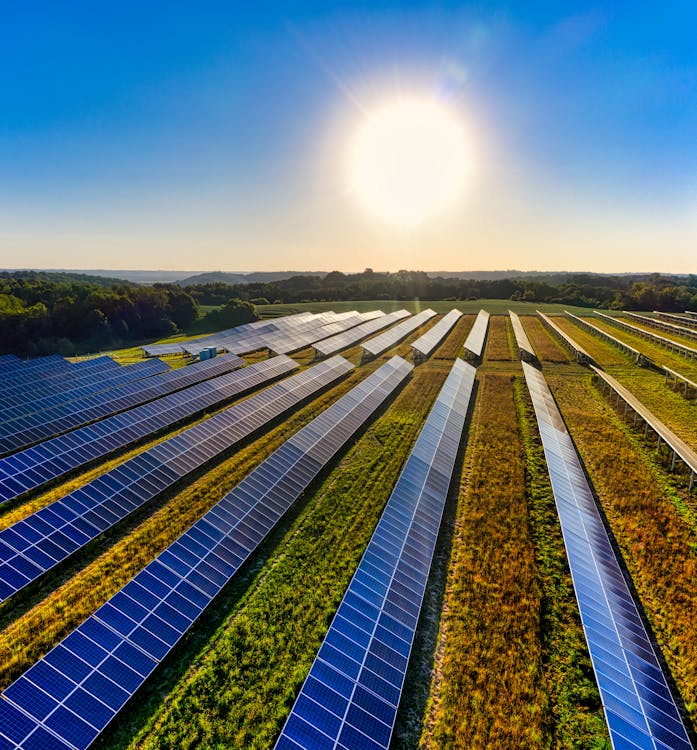Solar Power Rebates PA: Our Firm Focuses On The Installation And Management Of Photovoltaic Energy Systems
History and Development of Solar Panel Business
The beginning of photovoltaic panel companies can be traced back to the 1800s when Alexandre Edmond Becquerel discovered the photovoltaic impact. Would he have imagined how his discovery would transform the method we harness energy?
Early Beginnings

In 1954, Bell Labs established the first useful photovoltaic cell. This marked a substantial milestone in the history of solar energy. They were at first utilized to power area satellites, but who understood this was just the start?
Development and Development
- In the 1970s, an energy crisis resulted in increased interest in renewable resource sources, including solar power.
- By the 1990s, advancements in innovation and increasing ecological awareness led to the growth of solar panel business internationally.
A New Era
As we went into the 21st century, the solar market experienced a rapid growth. The demand for clean and sustainable energy brought about a new era in the photovoltaic panel industry.
Fascinating Facts
- The world's very first solar energy station was built in 1982 in Hisperia, California.
- By 2019, solar energy had become the world's fastest-growing source of power.
The journey of solar panel companies has been impressive, hasn't it? The future holds enormous potential, with constant improvements paving the method for a sustainable future. Can we picture a world powered totally by solar energy?
Progressing
Today, solar panel companies continue to innovate, aiming for more efficient and affordable options. The development of solar power has actually come a long method, and yet, the journey has actually just begun.
The Core of Solar Panel Production
Ever question what enters into developing those glossy, sun-loving photovoltaic panels? The procedure is as impressive as completion product (Commercial Solar Panels PA). High-purity silicon, the main active ingredient in photovoltaic panels, undergoes numerous changes to ensure its efficiency and durability
From Sand to Silicon
Crystalline silicon, the backbone of many solar panels, stems from easy sand. It's a fascinating journey, isn't it? The sand undergoes a high-temperature response with carbon to form silicon. This isn't simply any silicon. The silicon utilized in photovoltaic panels is "solar-grade," with a purity of 99.9999%. It's this purity that allows the panels to efficiently convert sunshine into power.
Ingot Development
Once the silicon is pure enough, it's time to form ingots. Image a large, round block of solid silicon. How is this accomplished? Through a procedure called Czochralski procedure, where the silicon is melted and then gradually recrystallized. It's a sluggish dance of science, leading to a solid item that is almost as pure as the raw silicon itself.
Slicing into Wafers
The ingots are then sliced into wafer-thin pieces, like slicing a loaf of bread. Each slice is a prospective solar battery, waiting to harness the power of the sun. Did you understand that the silicon wafers are just about 200 micrometers thick? That has to do with half the thickness of a human hair! The process needs precision and persistence, but the outcome is a set of wafers ready to be developed into solar cells.
Creating Solar Battery
With the wafer all set, it's time for the magic to happen. The silicon wafer is 'doped' with other elements like phosphorous and boron to produce an internal electric field. It's this field that enables the conversion of sunlight into electricity. Complex, isn't it?
Assembly and Quality Control
Solar cells are like puzzle pieces that come together to form a photovoltaic panel. The cells are soldered together in a grid-like pattern, then covered with a protective layer of glass. The last step involves rigorous quality control checks. After all, it's vital that every solar panel performs at its peak, would not you agree?
Expert Tip
Always remember that even the most optimally manufactured photovoltaic panel can lose effectiveness due to dirt and particles accumulation. Routine cleaning can significantly enhance your panels' performance.
Understanding the Environmental Effect of Photovoltaic Panel Business
Ever pondered the ecological footprint of a photovoltaic panel business? Green technology, such as solar, has transformed our energy landscape, but what about the behind-the-scenes effect?
The Manufacturing Process: A Double-Edged Sword
The manufacturing process for photovoltaic panels demands a considerable quantity of energy. This process, called 'em bodied energy', can be viewed as a kind of 'energy financial obligation'. It's a little like borrowing today's sunshine to power tomorrow's energy requirements. Stress not, the energy repayment time is typically shorter than you 'd believe!
- The energy repayment duration for solar panels is normally 1-4 years.
- After this period, the energy produced is basically carbon-free.

Life After Decommission
And what occurs when a photovoltaic panel reaches completion of its life-span? Can it simply be tossed into the garbage? No, that wouldn't be really green, now, would it?
A practical solution is recycling. While photovoltaic panel recycling is still in its infancy, it holds a world of potential. Recycling not just keeps products out of garbage dumps however likewise reduces the need for new raw materials.
Responsible Sourcing: More Than A Buzzword
Where does the silicon originated from, you ask? The industry's demand for silicon and uncommon minerals can lead to damaging mining practices. Responsible sourcing is for that reason necessary to minimize hazardous ecological effects.
Decreased Carbon Emissions: The Bigger Photo
Let's not forget the bigger photo: solar energy substantially lowers carbon emissions. Once set up, solar panels create tidy, renewable resource, balancing out their initial production footprint.
In brief, the ecological effect of solar panel companies is a complicated issue. With accountable practices, the pledge of a cleaner, greener future is well within our grasp.
Financial Efficiency and Market Share of Photovoltaic Panel Companies
Ever questioned why some solar panel companies - Affordable Solar Panels PA beat others in the market? What sets them apart? The essential depend on their monetary performance and market share
Financial Efficiency: A Vital Sign
Financial performance plays an essential role in the success of any business. For photovoltaic panel companies, it's no different. Strong monetary performance makes it possible for these click here companies to purchase cutting-edge technology, research, and development, thereby developing top quality, effective solar panels.
How do they attain this? With a focus on cost performance and strategic investments. Business that manage to reduce production expenses without compromising on quality tend to fare better in the market.
Market Share: A Procedure of Success
Market share, on the other hand, is a direct reflection of a company's appeal among customers. A high market share indicates more property owners are choosing their solar panels over competitors.
What's the secret recipe for gaining a larger market share? It comes down to consumer satisfaction and brand credibility. Business that focus on consumer requirements and preserve a positive brand name image are more likely to record a bigger share of the market.
- Customer Complete satisfaction: Photovoltaic panel business that deliver trusted products and remarkable customer support tend to have higher customer satisfaction rates.
- Brand Credibility: A strong brand name reputation is built gradually through consistent delivery of quality items and services.
Financial Efficiency and Market Share: The Symbiotic Relationship
Remarkably, the relationship between monetary efficiency and market share is not one-sided. They feed off each other. A strong monetary performance can increase a business's market share, while a high market share can improve financial performance.
As a solar panel business, stabilizing these two elements is crucial for long-term success. A business that overlooks either of them might discover it difficult to keep its position in the competitive solar market.
The Takeaway
So, what does all this mean for you? Whether you're a homeowner seeking to install photovoltaic panels or an investor considering the solar market, understanding the financial performance and market share of solar panel companies is vital. They are key indications of a business's health and capacity for future growth.